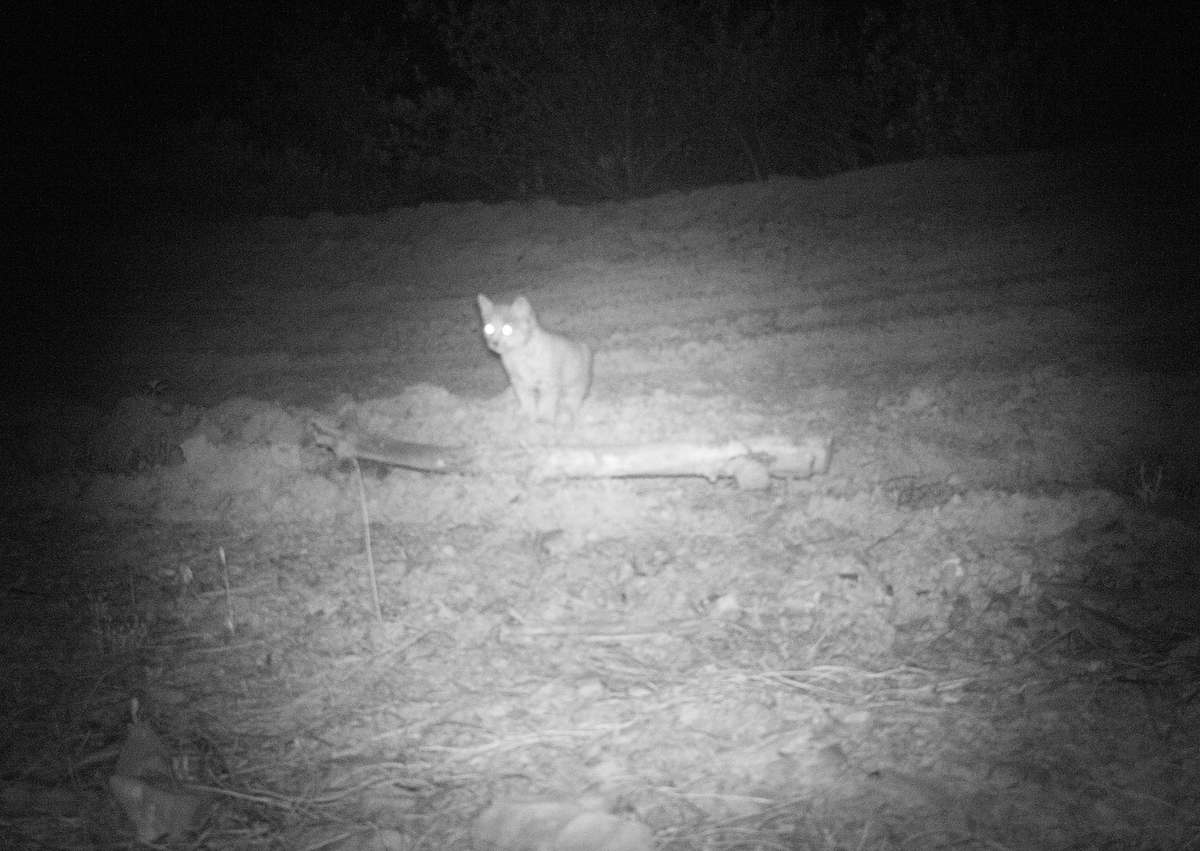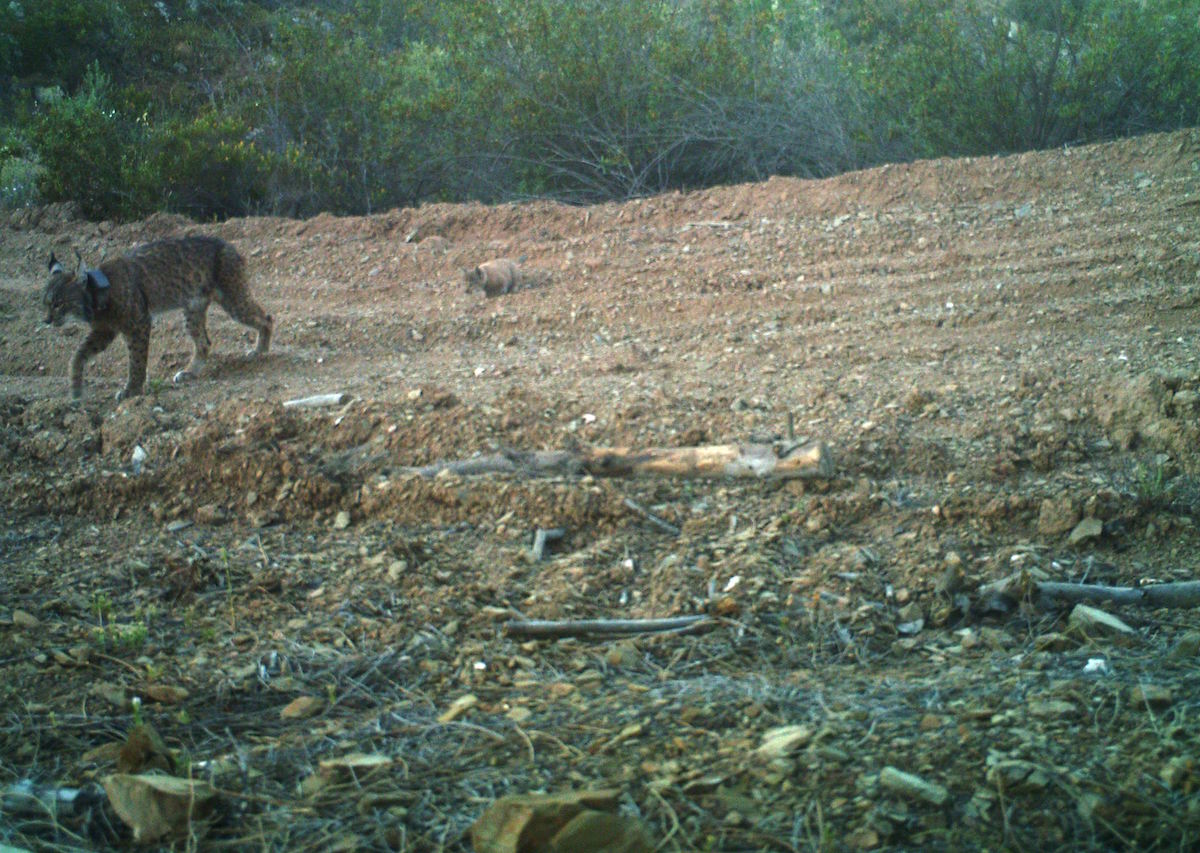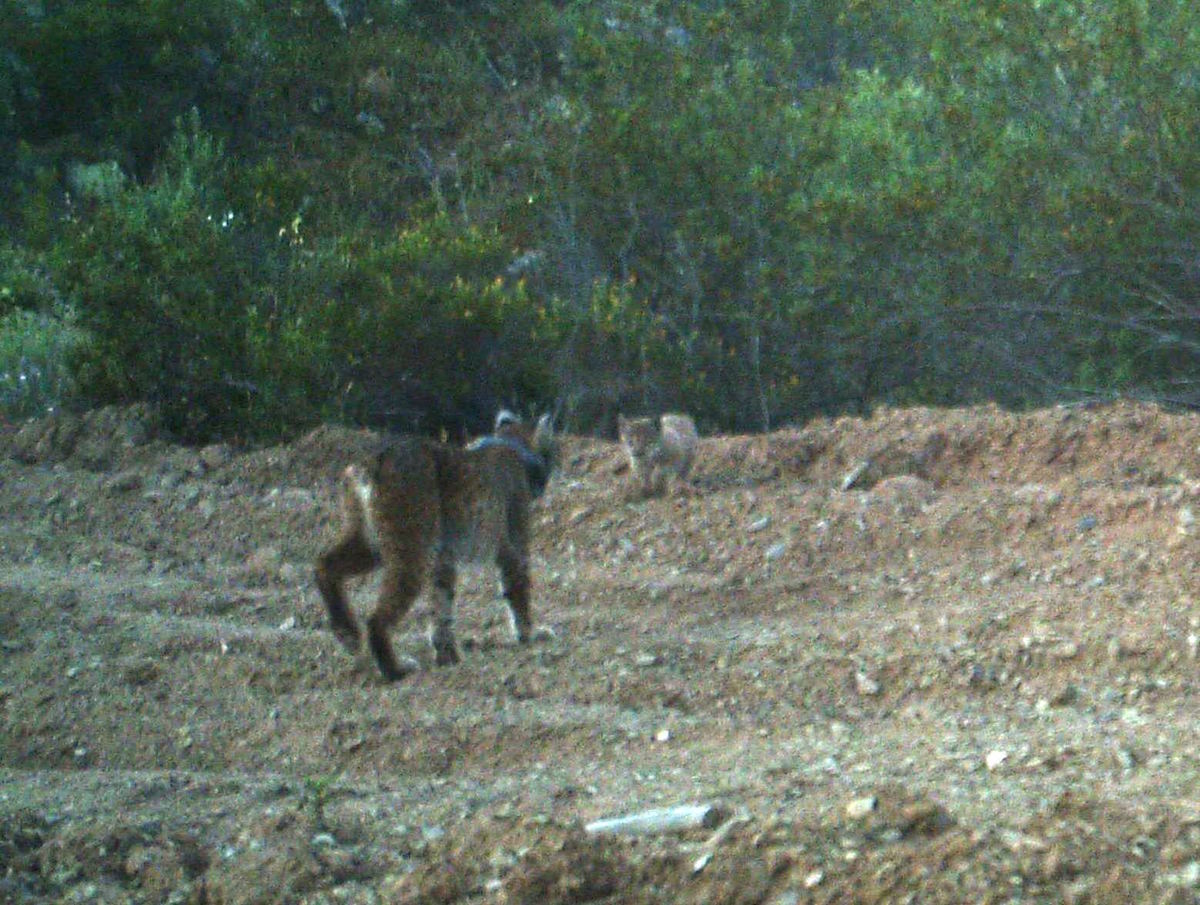For the first time in almost 40 years it has been confirmed the first Iberian-lynx cub born in the wild in Portugal. This is a new era for the fight to bring this species back from almost extinction.
Fifteen years ago we were loosing Iberian-lynx (Lynx pardinus), one of the four lynx species on the planet – together with the Eurasian lynx (Lynx lynx), bobcat (Lynx rufus) and Canada lynx (Lynx canadensis).
By 2002 there were only 200 left in the world, down from 100.000 Iberian-lynx in Portugal 150 years ago.
Since then, a lot of conservation work has been done. And yesterday, 5th May, the Portuguese Government confirmed “the first Iberian-lynx cub being born in the Guadiana Valley Natural Park”, in the south of the country.
In a press release, the authorities explained that a cub with 45 days had been photographed next to her mother, Jacarandá, the first Iberian-lynx reintroduced in the wild in Portugal, on 16th December 2014”.
The team of technicians and biologists working in the species conservation identified both the cub and the mother at a property in the region, Herdade das Romeiras.
Portuguese authorities consider this as a “mark in the Iberian-lynx’s conservation, since this is the first successful known reproduction in the wild for decades.”
According to the last census on the Iberian-lynx world population, in 2015 there were a total of 10 animals living in Guadiana Valley, four of them territorial females.
What does this means?
An endangered species being born is always a special moment. But this time it was even more special. There have been no confirmed Iberian-lynx births in this country since 1980. In those days, people felt like this feline was doomed to disappear.
The Iberian-lynx’s births started in Portugal by 2010, only in captivity. Just six months after the opening of the CNRLI, the Portuguese breeding centre, in Silves (Algarve), two cubs were born. This was the first confirmed reproduction in this country in the last 30 years. But the cubs died a few days later of congenital problems. In 2011, five cubs were born at CNRLI but none have survived.
Finally, in 2012, the first litters survived and Jacarandá was one of the cubs. She was Flora and Foco’s daughter, two lynx that still live at CNRLI, next to other 18 animals.
This female, Jacarandá, was the first Iberian-lynx to be reintroduced in the wild in Portugal, on 16th December 2014, in Alentejo, in one of the most important conservation projects in Europe, the Iberlince project. Its aim is to recover the historical distribution of the species, in Portugal and in Spain.
Today we heard from her again. Jacarandá has given birth to one cub, in nature.
The Iberlince project is working to increase natural populations with animals born in captivity. The reintroductions started in 2012 in Andaluzia Spanish region and in 2014 in other locations (Portugal – Guadiana Valley, Castela-La Mancha and Extremadura, both in Spain).
This year three females reintroduced in the wild gave birth to nine cubs: Keres with four, Kuna with four and Jacarandá with one cub.
Is the Iberian-lynx out of danger?
Jacarandá’s cub is a step forward in this conservationist fight. But the species is not out of danger yet.
By 22 June 2015, the International Union for Nature Conservation (IUCN) decided to remove the species from the Critically Endangered list. Now, Iberian-lynx is an Endangered species. Today there are 404 Iberian-lynx in the wild, with the biggest populations in the Andaluzia region.
Still, there’s work to be done. “We must continue our conservation effort in order to ensure the specie’s expansion and the growth of the populations in the future”, said Urs Breitenmoser, from IUCN, last year to Wilder.
The biggest challenges are the loss of habitat and prey (wild rabbit), deaths in the roads and illegal hunting.
[divider type=”thick”]The Birth of an Iberian-Lynx
A team from Wilder has been at CNRLI for two days on March 2015. In this series we show you how is it to work at this centre and all the people who take care of this endangered species.




